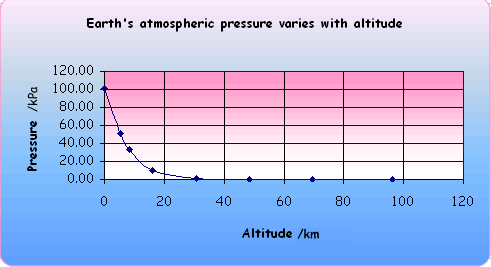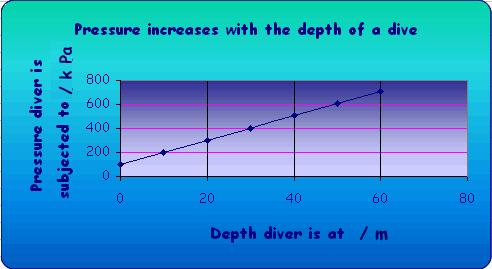Pressure exerted on solids
A force is a push or a pull.
When a force acts on a solid object it usually makes it go faster/slower, stop or start moving.
However, sometimes a force acts on a solid object and that object cannot respond by moving, instead the force creates pressure on that object.
This can result in the object being deformed in some way (having an indent appear on its surface or being 'squashed'). Sometimes this is permanent, sometimes when the pressure is removed the object returns to its original shape.
You cannot tell the pressure effect that a force will have simply by its size.
The contact area (only the area in contact! ... not the total surface area!) between the force and the object is also important).
THE GENERAL EQUATION

This can be written as:

UNITS
It is usually expressed in how much force (in newtons) is applied to one metre squared:

This unit can be expressed as a single word - the pascal (note the capital 'P' and small case 'a'.
In exams and tests you will sometimes find it expressed in how much force (in newtons) is applied to one square centimetre:

Work in whatever units you are given.... don't change from one to another unless you are told to. However there is a relationship between the two units.
A square metre is ten thousand square centimetres, therefore the pressure in pascal is always ten thousand times bigger than the pressure expressed in N/cm2
Word questions
When you are asked to explain a presure situation in an exam you need to make sure you include the following points:
- identify the force in the question (someone's weight usually!)
- identify the area of contact - big(er)/small(er) etc
.- say that pressure is the ratio of force to contact area.
- then explain that if the area of contact gets bigger the pressure will be less - and vice versa
- make sure you answer the question you are asked!!!
Pressure in fluids
The pressure exerted on you by a gas or a liquid increases as the weight of that fluid above your head increases. The atmosphere is the air around you.
At sea level atmospheric pressure is 101,000 N/m2
As you go to a higher altitude that pressure decreases.

When you dive under the sea the ocean's water pushes down on you as well as the air above you!

Experiments can show that:


